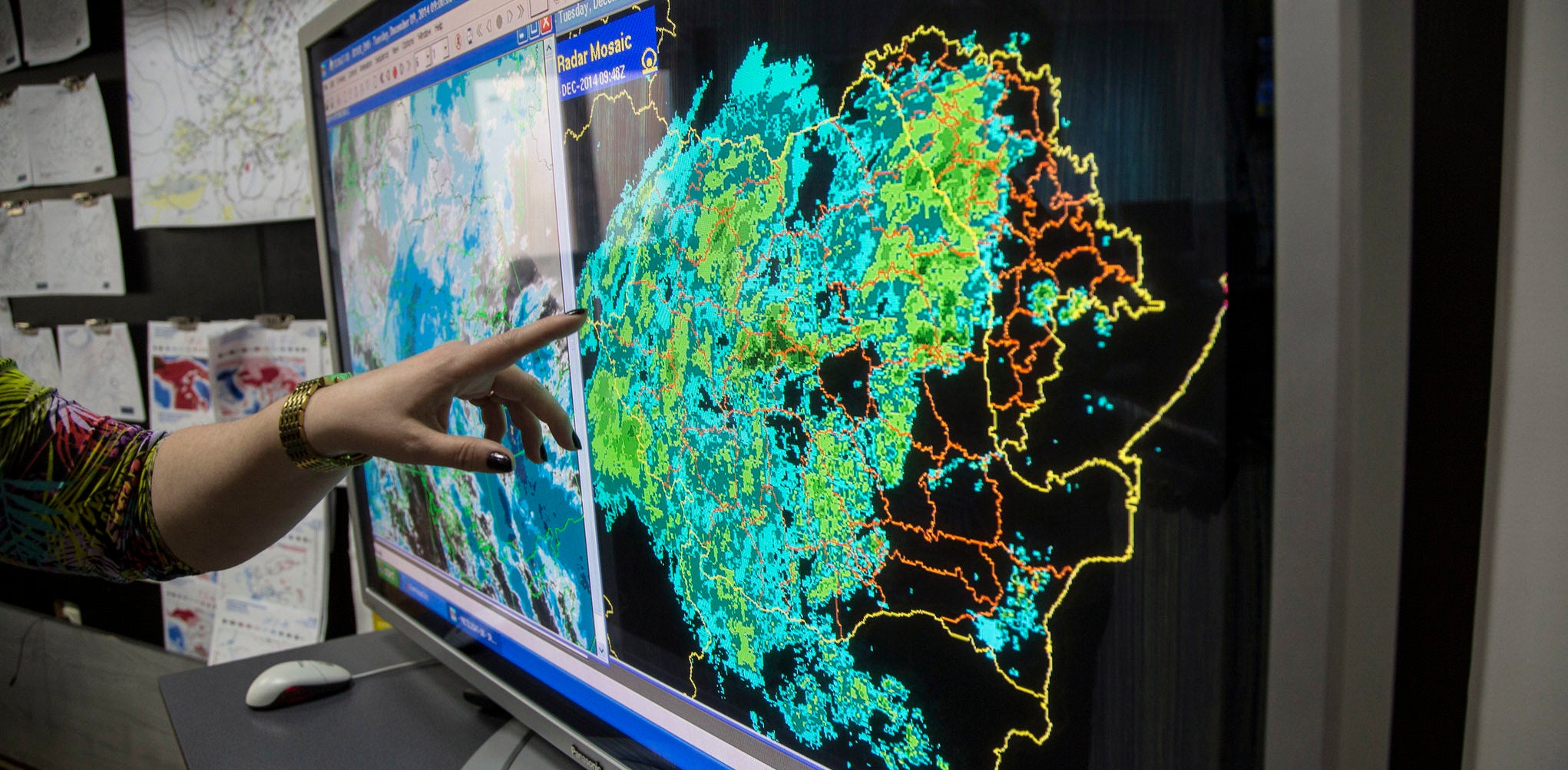 Young women look at their cellphone during a community meeting.
Young women look at their cellphone during a community meeting.
Earlier this month, as the COP28 climate conference focused on how to slash emissions and accelerate climate action, it became increasingly clear that many sectors are using digital tools to support their climate solutions. We also heard about how climate hazards are not future risks, but a reality that affects people, sectors, and economies today. It is time we take a closer look at how digital technologies are fast-tracking climate action across the globe.
I spoke firsthand in Dubai with leaders from around the world who are using digital technologies to aid the transition to renewable energy, connect public transport systems, monitor deforestation, save water, and more. These real-world examples are testimonies to the potential of digital tools for climate action if we effectively scale them up. A recent estimate by the World Economic Forum predicts that digital technologies could cut emissions by up to 20 percent by 2050 in the top three highest-emitting sectors—energy, materials, and transportation. Leaders are taking note of the possibilities, with two-thirds of developing countries already integrating technology into their national climate action plans to meet targets set out in the Paris Agreement.
We also discussed at COP28 how digital technologies can help countries build resilience to climate shocks. In Senegal digital tools are helping farmers manage changing weather patterns, for example by selecting drought resistant seeds for their crops. In Pakistan, during recent floods, digital devices played a key role in connecting citizens with emergency support and family members. At the national level, Pakistani authorities now monitor seasonal floods in real time with a dashboard that tracks everything from damaged road infrastructure to the distribution of blankets to those who are homeless. And in Kenya, an app tracks real-time data on tree health to support a national campaign to reach at least 30 percent forest cover nationwide by 2032.
At the same time, the digital sector needs to reduce its own carbon footprint. The sector generates between 1.4 to 4 percent of global emissions, similar to that of the airline industry. Data centers alone use as much energy as entire countries in some low-income economies due to their vast consumption of resources to power and cool the servers that keep us all connected. In Ireland, a global data center hub, data centers accounted for almost one-fifth of the country’s total electricity used in 2022. Phones, computers, and other IT equipment also expend large amounts of energy, especially in manufacturing.
A lack of detailed country-level emissions data from the digital sector is an obstacle to progress. This is why the World Bank joined the International Telecommunication Union (ITU), among others, at the Green Digital Action track at COP28, which focused on industry-wide commitments to more precisely disclose and reduce emissions, while advancing climate solutions with technology. This information is also important at a national level. When governments collect data on digital emissions, they can make informed policy decisions on how best to promote sustainable digitalization. This is an area where the World Bank will undertake more analyses to inform policy recommendations.
Looking ahead, the development challenge will be how to substantially expand access to digital infrastructure, devices, and applications while simultaneously cutting down on the sector’s use of resources. Many digital firms are leading by example as they shift to more renewable energy and invest in energy efficiency. For example, the telecommunications company Telefónica, which operates in Europe and throughout Latin America, has reduced its direct greenhouse gas emissions by 51 percent over seven years—82 percent of its energy now comes from renewable sources. If digital tools become greener, the reduced carbon footprint will be multiplied across the many sectors that use these tools.
Last year, the World Bank invested over one billion dollars in digital transformation projects, which increasingly incorporate climate adaption and mitigation good practices in their design. Over 80 percent of these funds were invested in the Africa region. For example, in Mozambique the World Bank is supporting investments that include renewable energy to power broadband services for government offices, schools, and health centers as well as joint deployments of home solar systems and renewable energy powered mobile networks covering up to 1.3 million individuals in rural communities.
Industry and governments must work together to propel this green digital twin transformation. Governments can promote greening of the digital sector through policies that facilitate access to cleaner energy, as well as adopt digital solutions to address the climate crisis. While many countries are committed to both climate action and digital transformation, they require support to create policies, build capacity, and access data on the digital sector in order to reach their goals.
One resounding message I heard at COP28 was that the world is looking for solutions that match the urgency and scale of the climate crisis—digital technologies are a key tool in this effort. Digital solutions can accelerate reaching our goal of a world free of poverty on a livable planet.
RELATED:
Green Data Centers: Towards a Sustainable Digital Transformation



Join the Conversation